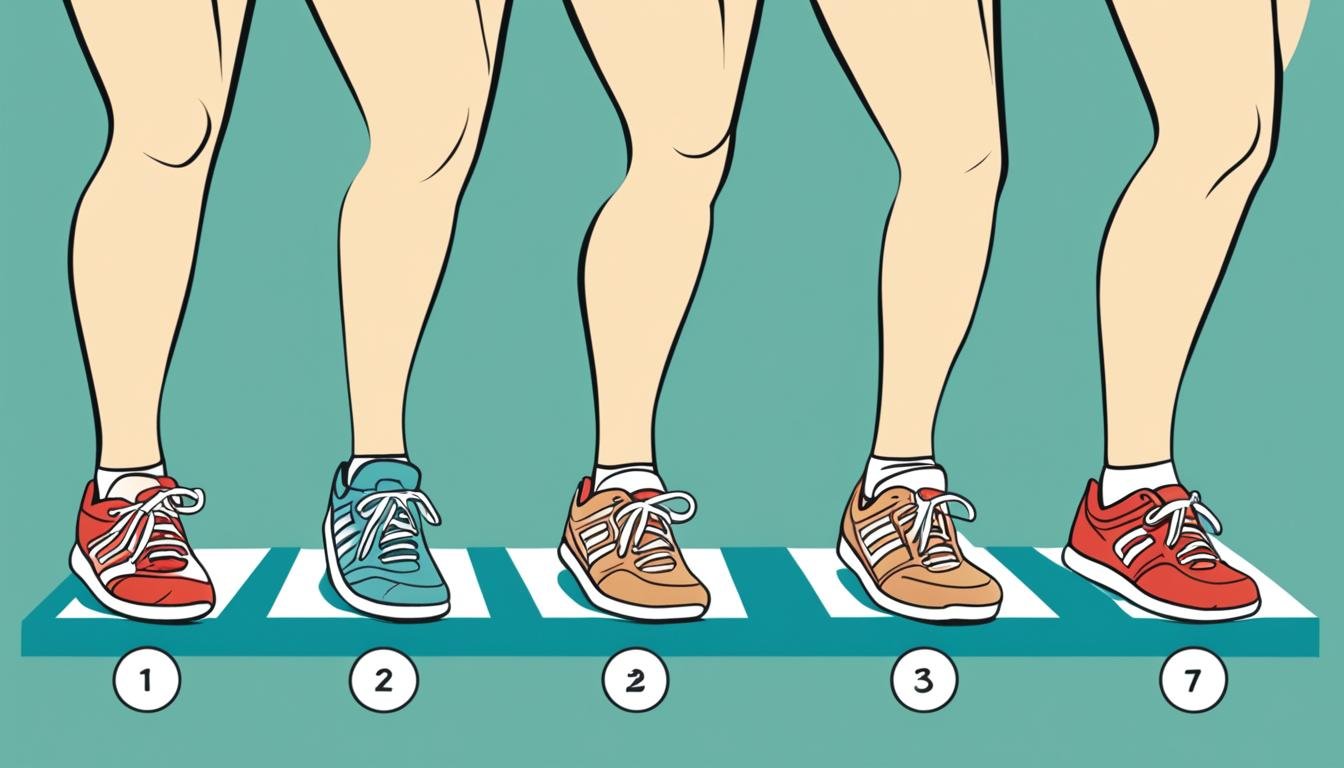Commitment and Consistency: The Foot-in-the-Door Technique
Did you know the foot-in-the-door technique can boost email sign-ups by 100%? One company saw a huge 113% jump in conversions just by using this method. By focusing on commitment and consistency, businesses can see amazing results. For example, a subscription service saw a 11.4% increase in monthly revenue. This shows how small steps can lead to big wins.
This article explores the psychology behind the foot-in-the-door technique. It uses case studies and real marketing examples to show its impact. You’ll learn how this strategy can change behavior and increase compliance.
Key Takeaways
- The foot-in-the-door technique can double email signup rates, enhancing lead generation.
- Understanding psychological influence is crucial in driving compliance through commitment and consistency.
- Small initial commitments can lead to significant long-term behaviors, as seen in increased subscription and revenue rates.
- Public and effortful commitments are particularly effective in securing long-term compliance.
- Case studies, like Freedman and Fraser’s safe driving campaign, underscore the technique’s practical applications.
Introduction to the Foot-in-the-Door Technique
The foot-in-the-door phenomenon is a key idea in social psychology. It was first shown in a study by Freedman and Fraser in 1966. This method starts with small requests to make way for bigger ones. It’s a way to get people to agree to more things over time.
This technique works well in many areas, like sales and marketing. For example, subscription services use it by offering free trials that lead to paying subscriptions. Online stores also use it by suggesting more products to buy, making customers spend more money.
What makes this method work is the idea of commitment and consistency. When people agree to a small request, they tend to keep doing it. This is especially true when offers are personalized to what they like.
But, using this method must be done right. It should not be used in a way that makes customers unhappy or hurts the brand’s image. It’s important to be honest and offer real value to customers.
This strategy is not just for online use. In stores, offering extra products at checkout can lead to more sales. Research shows that similar tactics, like the door-in-the-face technique, work well in getting people to buy things and make decisions.
How Commitment and Consistency Drive the Foot-in-the-Door Technique
The foot-in-the-door technique uses our tendency to stick with our choices to change our behavior. It’s based on wanting to look consistent to others and ourselves. Experts have found that starting with a small commitment makes us more likely to agree to bigger requests later.
The Role of Psychological Influence
Understanding how our minds work is key to seeing why the foot-in-the-door technique works. The idea of cognitive dissonance says we feel uneasy when our actions and beliefs don’t match. To feel better, we try to make our future actions line up with our past ones. This helps us agree more often.
In a study by Jonathan Freedman and Scott Fraser, people who first agreed to show a small sign were 76% more likely to agree to a bigger request. Without the initial sign, only 17% agreed.
Why People Strive for Consistency
People like to be consistent because of the self-perception theory. This theory says we figure out our beliefs by looking at what we do. When we make a small commitment, we start to see ourselves as someone who supports that cause. This makes us more likely to say yes to similar requests later.
For example, saying you’ll support a cause or signing a petition makes you want to keep acting that way. In one study, 76% of homeowners who signed a petition for safe driving put up a “Drive Safely” sign. Only 17% of those who didn’t sign the petition did the same. Being consistent with our actions helps us feel good about ourselves and reduces feelings of discomfort.
Key Components of the Foot-in-the-Door Technique
The foot-in-the-door (FITD) technique is powerful because of its core elements. By knowing these, businesses and marketers can make more persuasive strategies. These strategies lead to more people saying yes and doing things consistently.
At the heart are active and public commitments. These make people see their actions as part of who they are. This makes them more likely to agree with later requests, raising the chance of success.
For example, many Netflix users began with a free trial. This small step led to paying for the service later.
Marketing teams use FITD by starting with small commitments, like free trials. By sharing these commitments publicly, customers stick with their choices. This reduces the discomfort of changing their minds.
The Importance of Effort and Free Choice
How much effort and the feeling of free choice in making a first commitment matter a lot. When people feel they chose to do something, they’re more likely to agree to more requests later. This helps reduce inner conflict and increases the chance of success.
Businesses offer free services, like SEO checks or first meetings, to get customers to put in some effort. These services seem like they’re chosen freely. This approach helps lower resistance to making more commitments later.
In short, knowing about active, public commitments and the value of effort and free choice makes the FITD technique more effective. Using these elements in persuasion strategies helps smoothly move from small to big commitments. This leads to more people agreeing and building strong customer relationships over time.
Case Study: Freedman and Fraser’s Safe Driving Campaign
In 1966, Freedman and Fraser showed how the foot-in-the-door technique can change behavior. They focused on a safe driving campaign. They used sequential requests to see how small commitments affect bigger requests.
Initial Request and Follow-Up
The study began by asking Palo Alto residents for a small favor. They were asked to put a 3-inch “BE A SAFE DRIVER” sign in their windows. Almost all homeowners agreed to do this.
Two weeks later, the same residents were asked for a bigger favor. They were asked to put a large sign in their yards. Surprisingly, 76% of those who put up the small sign also agreed to the large one.
Impact on Compliance Rates
The study showed a big difference in how people responded. When asked directly to put up the large sign without any small step, only 17% agreed. This shows how starting with a small commitment can make people more likely to agree to bigger requests.
This study is a great example of how to change behavior with sequential requests. It shows a clear path to getting people to comply more.
Applying the Foot-in-the-Door Technique in Marketing
In today’s competitive marketing world, the foot-in-the-door technique is a strong way to build customer relationships and increase sales. By asking for small, easy requests first, companies can set the stage for bigger commitments from their customers.
Email Sign-Ups and Onboarding
One big way to use the foot-in-the-door technique is with email sign-ups and onboarding. Companies start by asking for just a little info, like an email address. Then, they guide the user through a detailed onboarding process.
For example, Howard Dean’s 2004 fundraising campaign asked for small donations to get people involved. Pottery Barn uses augmented reality apps to engage customers a little at first, making them more likely to buy something.
Check-Out Optimization and Lead Generation
The foot-in-the-door technique also shines in check-out optimization and lead generation. By making the first steps easy, like adding items to a wishlist or trying something for free, businesses can boost their check-out rates. Amazon uses wishlists to adapt to what users want, helping to drive sales.
FitBit saw a huge jump in user growth by using the foot-in-the-door technique. This shows how powerful it can be in keeping customers engaged over time.
Customer testimonials and social referrals, like 24 Hour Fitness getting 300 thousand new members, prove the value of this technique. By using it well, companies can greatly improve their lead generation and sales.
Behavior Change through Sequential Requests
The foot-in-the-door technique uses the power of asking for things in order to change behavior. It’s based on the idea that saying yes to a small request makes you more likely to say yes to a bigger one. For example, housewives were more likely to agree to a big request after agreeing to a small one first. This shows how easy it is to get people to do more once they’ve done a little bit already.
Using this method has real benefits in many areas. In a study, people who signed a petition against drunk driving were more likely to call a taxi when they couldn’t drive themselves. This shows how starting with a small commitment can lead to bigger changes in behavior. It proves that these methods can help people keep changing their ways over time.
A study on recycling showed that signs asking for recycling led to more people sticking with it than just offering rewards. This shows how asking for something first can make people more likely to keep doing it. Schwarzwald, Bizman, and Raz (1983) found that asking for a small favor first led to more donations later on. This proves that starting with a small yes can make people more likely to help out again.
In marketing and social campaigns, asking for small favors can get more people involved and keep them interested. Most of the time, people say yes to more requests after saying yes to the first one. This method has been proven to work well in many different situations. It helps people stay committed and change their behavior for the better.
Examples of Effective Use of the Foot-in-the-Door Technique
The foot-in-the-door technique is used in many areas, showing its power and success. Here are some examples where it has made a big difference.
Marketing and Sales Applications
Marketing often uses the foot-in-the-door technique to get customers involved and increase sales. For example, brands might give out free samples to get people interested. This small step often leads to bigger buys later.
Another way is through no interest EMI (Equated Monthly Installment) plans. Customers pay a small down payment and then interest-free monthly payments. This approach gets customers to commit to more.
Pre-approved loans work by starting with small amounts or low interest rates. This encourages customers to accept bigger financial deals later.
Gamification is also effective. Brands use small actions like earning points to offer discounts. These steps build customer loyalty and encourage bigger purchases.
The razor and blades model is another example. Companies sell a product at a low profit but make more money from a related product. This approach gets customers to buy more over time.
Fundraising and Charitable Contributions
The foot-in-the-door technique works well in fundraising too. Asking for small things, like signing a petition or a small donation, often leads to more support later.
Studies show that people who signed a safe driving petition were more likely to show support with a bumper sticker. In another study, those who did a small favor were 135% more likely to agree to a bigger request.
Being open and clear is key in these efforts. Charities must make sure donors understand what they’re committing to. This honesty builds trust and leads to bigger donations.
Also, people from collectivist cultures might be more likely to agree to more requests. This knowledge helps charities tailor their appeals to different cultures, making their fundraising more successful.
Limitations and Challenges of the Foot-in-the-Door Technique
The foot-in-the-door technique is powerful but has its limits and hurdles. It’s key to know these to use it well in different situations.
Psychological Reactance
A big challenge is psychological reactance. This happens when people feel forced or threatened by a request. It can make them say no to more requests. If the first ask is too pushy, it can cause this reactance, hurting the technique’s success.
Proportionate Scaling of Requests
It’s also vital to ask for the right amount. The first ask should be big enough to get people to agree but not too big to scare them off. The goal is to get people to say yes bit by bit without making them tired or upset. For example, starting with a small buy can lead to bigger sales if done right. But asking for too much too soon can mess things up, adding another persuasion challenge.
Studies show that 60% of customers buying a big-ticket service had first bought a smaller item this way. But getting 40% or more to buy needs careful scaling and teaching customers about the products to prevent confusion.
These issues show how crucial it is to balance influencing people’s minds and teaching them to use the foot-in-the-door technique well.
Commitment and Consistency: The Foot-in-the-Door Technique in Online Strategies
In the digital world, the Foot-in-the-Door technique boosts user engagement. It starts with a small first step from users, making way for bigger actions later. Knowing how commitment and consistency shape online behavior is crucial for online marketing tactics and user engagement strategies.
Online Marketing Tactics
Businesses can use the Foot-in-the-Door technique in many ways for online marketing tactics. For example:
- Asking for an email address for newsletters can lead to more purchases later.
- Offering free trials or samples can make users want to buy more or explore more features.
- Showing personalized recommendations based on what users did before can make them act consistently.
This method is backed by a study by Freedman and Fraser, showing a small initial ask can lead to more compliance later. Online stores often use sign-up forms to start a connection, using this to keep users engaged.
User Engagement and Retention
To boost user engagement strategies with the Foot-in-the-Door technique, start with easy tasks that lead to more interaction. Techniques include:
- Asking users to share feedback or take part in short surveys.
- Giving small rewards for simple actions, like signing up or sharing content online.
- Using customer reminders of past interactions to keep users coming back.
These steps not only get users more engaged at first but also keep them coming back. Users start to interact more deeply with the business over time.
The digital use of the Foot-in-the-Door technique shows how small, voluntary actions can lead to big, lasting commitment. It’s a key strategy for online marketing tactics and user engagement strategies today.
Conclusion
The foot-in-the-door technique shows how commitment and consistency change behavior and improve persuasion. By starting with small agreements, we can lead to bigger commitments. This method works well in marketing and changing behavior, showing its wide use.
Real examples prove how well these principles work. In Bloomington, Indiana, volunteering went up by 700% after people made small commitments. In New York City, almost everyone helped stop a theft after being asked, showing the lasting effect of initial promises. These stories show how strategic use of these methods can increase involvement and sales.
But, the foot-in-the-door technique also has its challenges. It can cause people to resist more if the requests get too big. Yet, when done right, it can greatly change how customers act and affect marketing results. Knowing how commitment and consistency work helps make campaigns more effective and engaging for everyone.
Source Links
- The Definitive Guide to the Foot in the Door technique (learn how to 2X your conversion rate) | Conversion
- Consistency and Commitment
- Persuasion Strategies: Foot-in-the-door & Door-in-the-face Techniques – Concept | Social Psychology | JoVe
- Understanding the Foot-in-the-Door Technique in After-Sale Upsells
- Persuasion Strategies
- Commitment and Consistency at Work: How to Master Persuasion in Your Workplace
- Commitment & Consistency Bias | Lirio Bias Brief | Lirio
- Things marketers need to know: The foot-in-the-door technique
- Use the ‘foot in the door’ technique in promotions | Talon.One
- LOCOMOTIVE CONTENT — Foot in the Door Method
- Social Influence: Compliance and Conformity – Cialdini et al. – Article
- 23 Persuasion Techniques: How to Use Psychological Persuasion Methods for Your Marketing
- What is the Foot-in-the-door Technique?
- 5 Commitment and Consistency Examples in Marketing
- Foot-in-the-door technique
- Influence: The Psychology of Persuasion by Robert Cialdini
- The Foot-in-the-Door Marketing Technique: How Brands Use it to Win Customers
- What is the foot-in-the-door technique and why does it work?!
- How can you use the foot-in-the-door technique to close more sales?
- Foot-in-the-Door Technique – FourWeekMBA
- The Foot In The Door Technique Explained with Examples
- Foot-in-the-Door As A Persuasive Technique
- How Commitment and Consistency Influences Behaviour
- Foot in the door marketing
- Using the Foot-in-the-Door Technique to Gain New Clients







